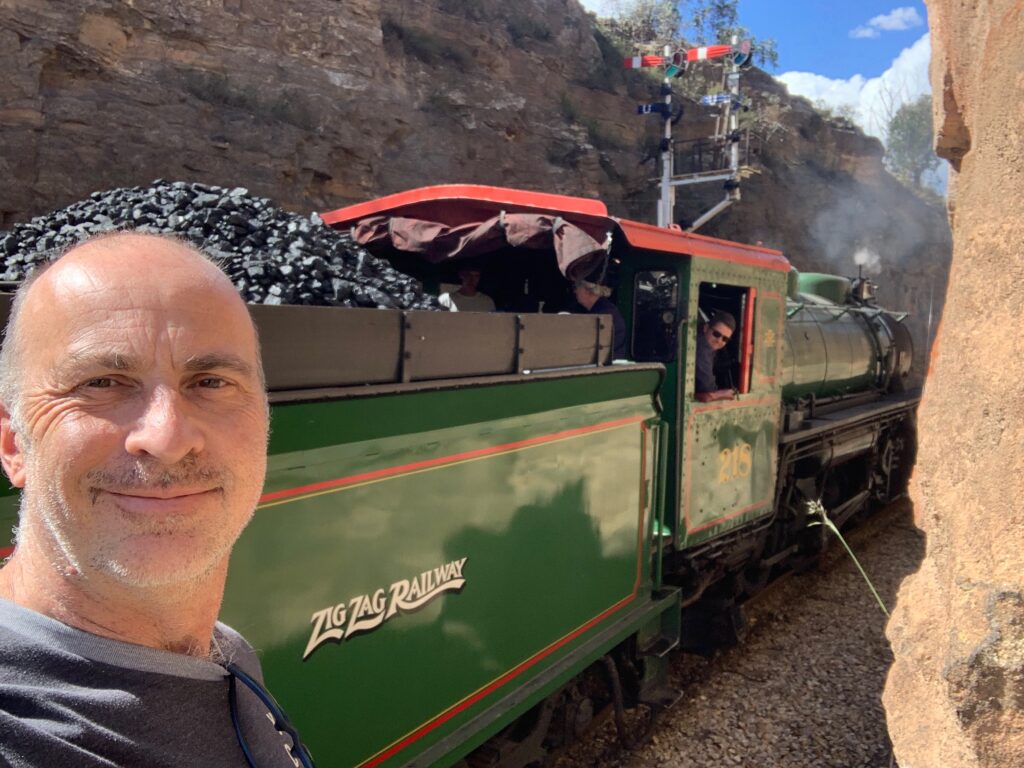
I have been waiting to ride the Zig Zag Railway, located west of Sydney since it opened as a tourist railway in 1975. The Zig Zag Railway, true to its name, tackles challenging terrain with a series of dramatic switchbacks, creating a zigzagging route through the stunning Australian Blue Mountains.
This Railway in NSW was described as “the eighth wonder of the world” when it opened in October 1869. It was praised for its technological breakthrough as trains moved people and produce between Sydney and the flat plains in the west of the state of New South Wales.
The one thing that had stood in the way to creating the route was the Blue Mountains with a steep rocky cliff covering a vertical distance on the western flank of 550 ft (170 m) steep rocky cliffs. The soil is built on hard sandstone. Hence, a very creative solution was developed under the leadership of John Whitton, Chief Engineer of the then NSW Government Railways.
Picture three different paths for the train shaped like a Z – like three roads stacked on top of each other. They’re called Top Road (the highest one), Middle Road (in the middle, obviously), and Bottom Road (the lowest)The Top part of the ‘Z’ is Top Road, the middle part is Middle Road. Bottom Road is now only a short section leading to the Depot; the rest remains part of the current NSW State Rail network and still carries trains between Sydney, and the west. The famous Indian pacific train between Sydney and Perth even passes through here.
On the Zig Zag Rwailays, the train ollows these roads in a zigzag pattern. Coming from Sydney it goes along the Top Road, then it takes a turn and comes down to the Middle Road, and finally, it descends further to the Bottom Road. At the highest and lowest switches/ points (Top and bottom points), the engine(s_ at the front of the train runs around to the back, and the train heads in the opposite direction. In this photo, we are riding the middle road, down the hill. A viaduct on the Top Road can be seen in the upper right and the lower road is in the bottom left side.
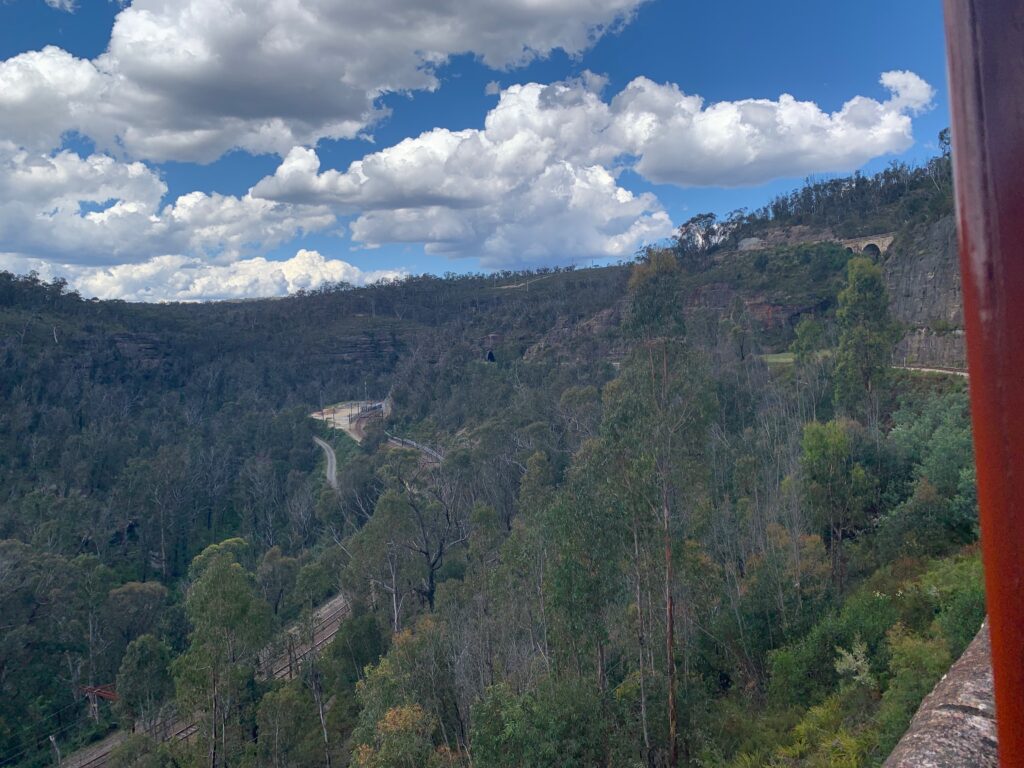
In a nutshell, it’s like a zigzag dance – up, across, down, turn around, and go back. This zigzagging helps the train manage the tricky slopes but also adds a bit of fun to the journey! Tourust focked to it but the solution proved shiortlived. The rise in traffic, steep gradients and the need to reverse trains made the entire journey more and more unworkable. A potential catastrophic incident with a runaway train at one of the reversing points compelled the authorities to rethink the route. A deviation involving nine tunnels bypassed the Zig Zag and opened in 1910. The area was turned into a reserve for picnics and hiking until the 1970s when a volunteer group turned it into a tourist ride, until 2012.
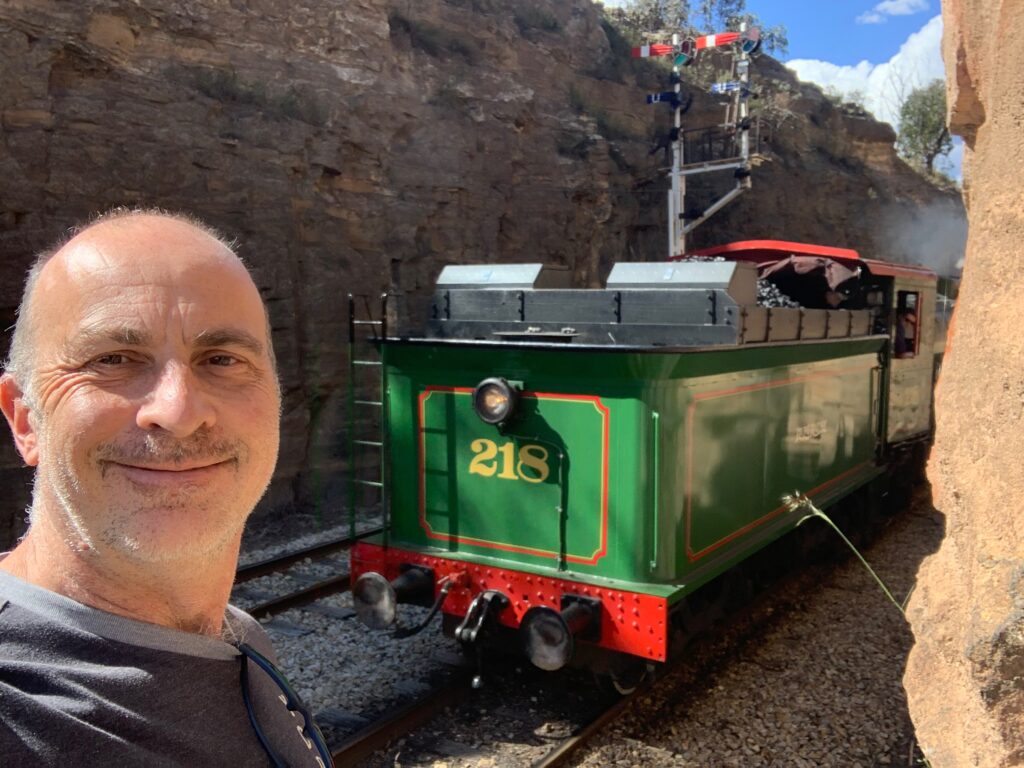
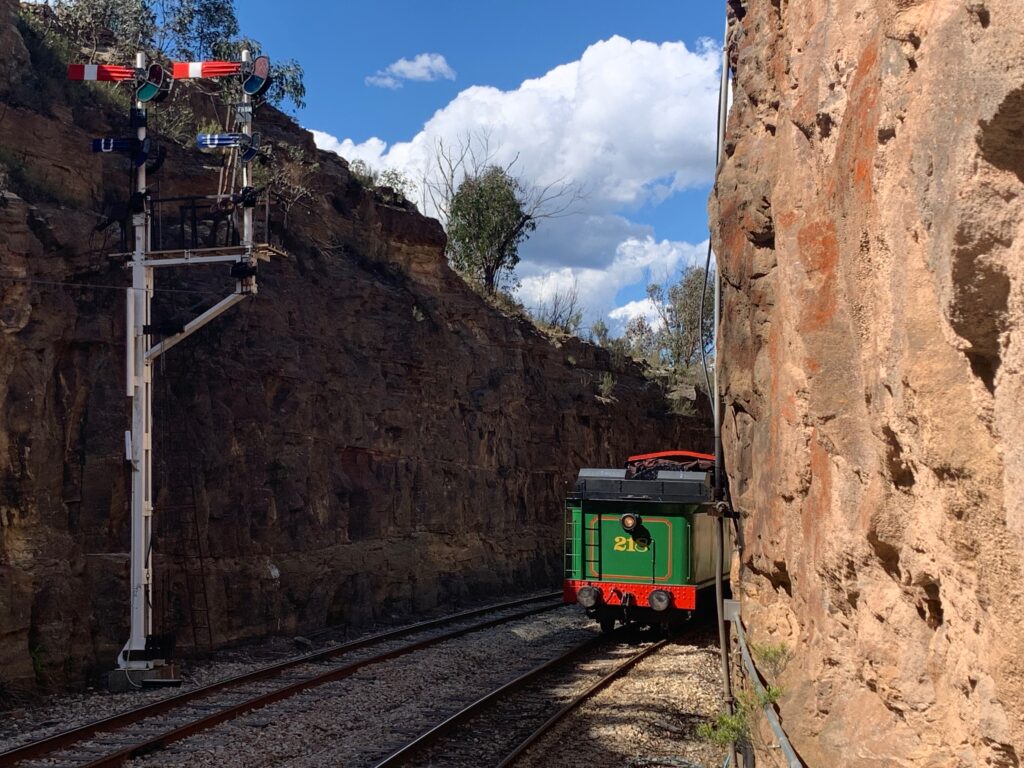
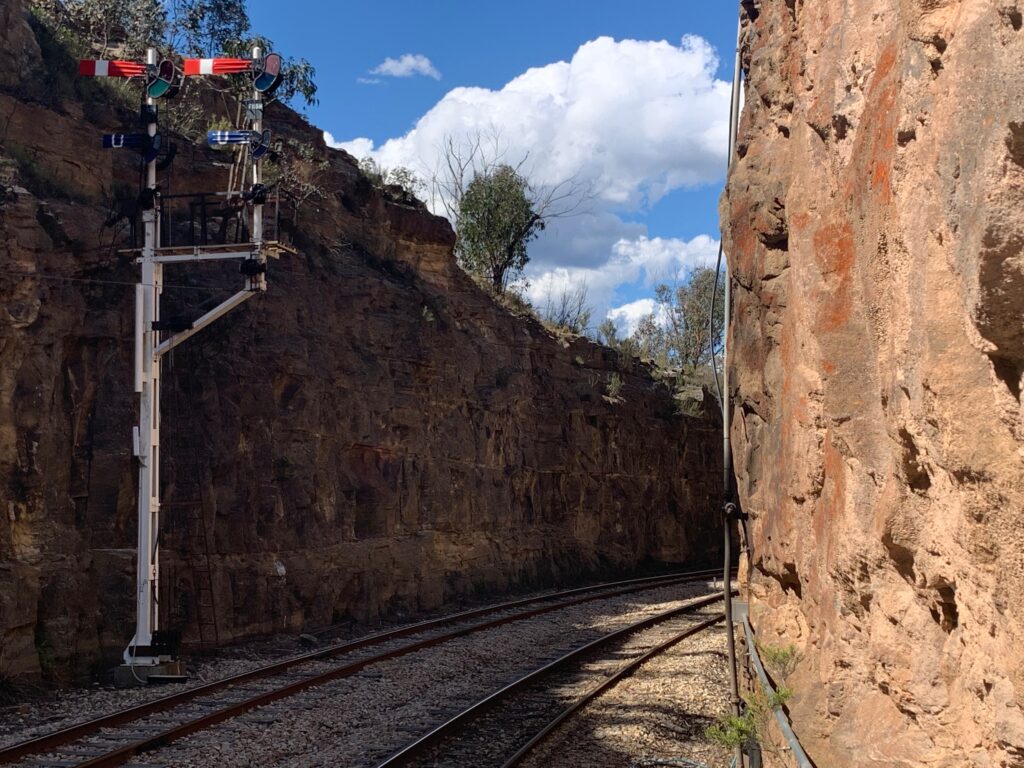
In that year, the line was shut down as it no longer met new stricter railway safety rules. While it was being upgraded, a giant forest fire (The Gospers Mountain fire) tore through the region during Black Summer in 2019, turning thousands of sleepers to ash and damaging equipment and buildings. Volunteers have worked hard to restore this magical line, and it now operates two trips a day on selected weekends. Following the recent fire, extensive restoration efforts have been underway. The meticulous restoration of carriages, tracks, and infrastructure by dedicated and passionate volunteers ensures that future generations can continue to experience the magic of the Zig Zag Railway.
Stations
There are just three stations on the route: Clarence, Top Points and Bottom Points.
If you drive to the railway, you will start at Clarence Station. It has a small gift shop, a mobile cafe with a couple of dining cars to eat and drink in, and lavatories, plus a large car park.
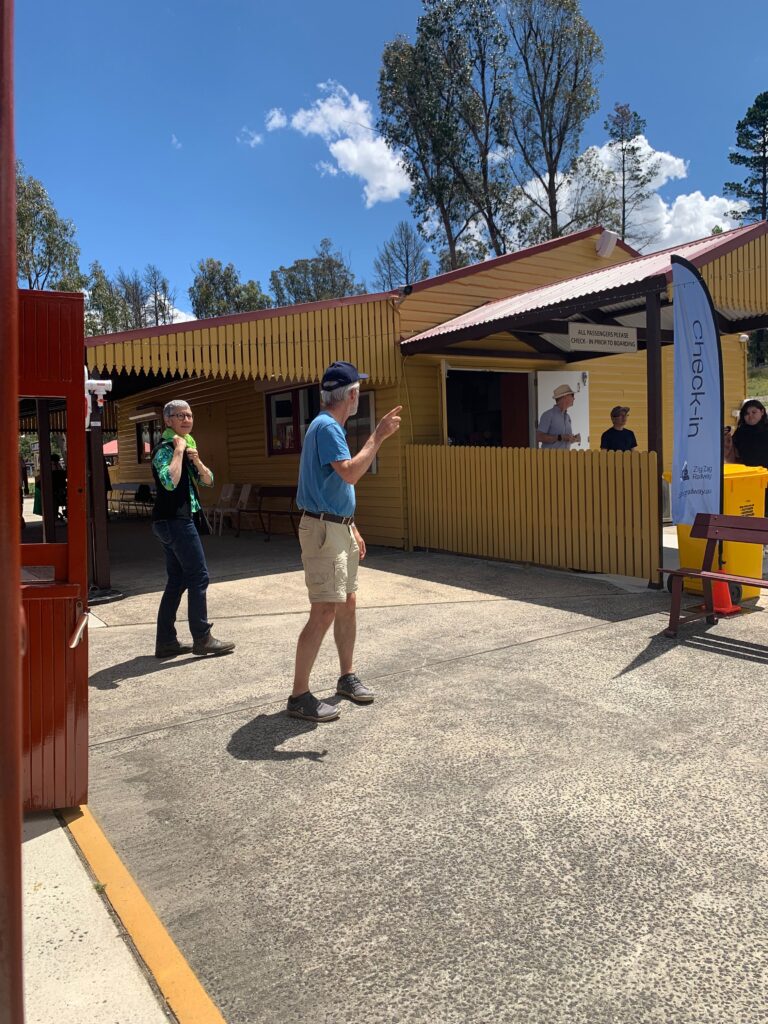
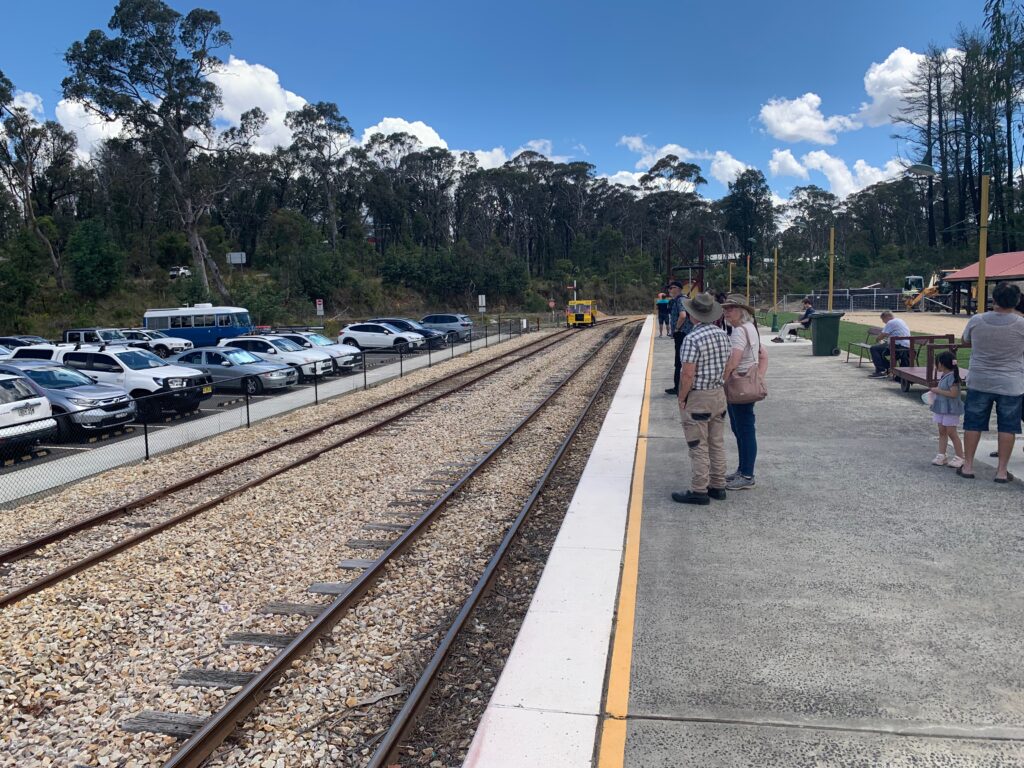
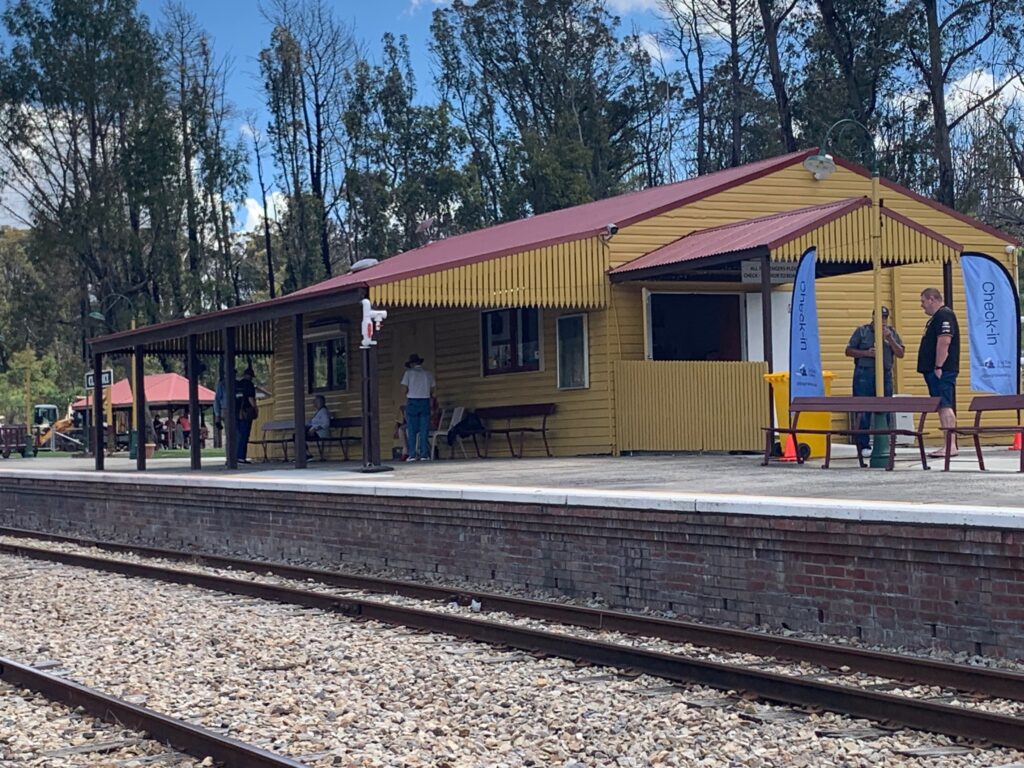
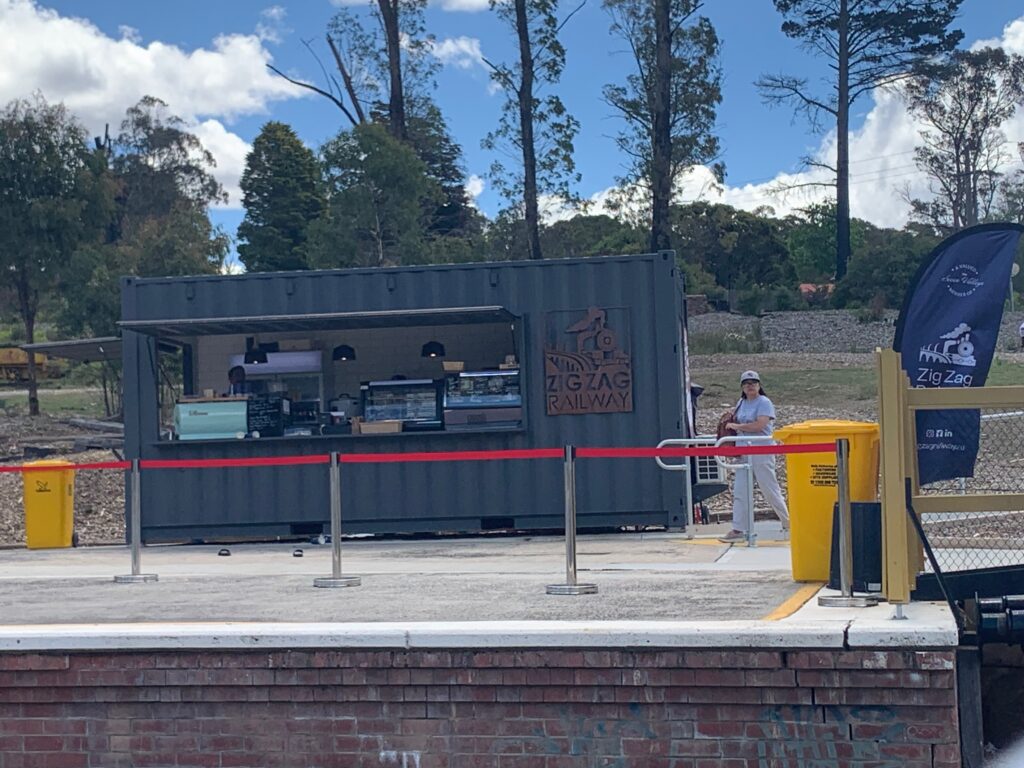
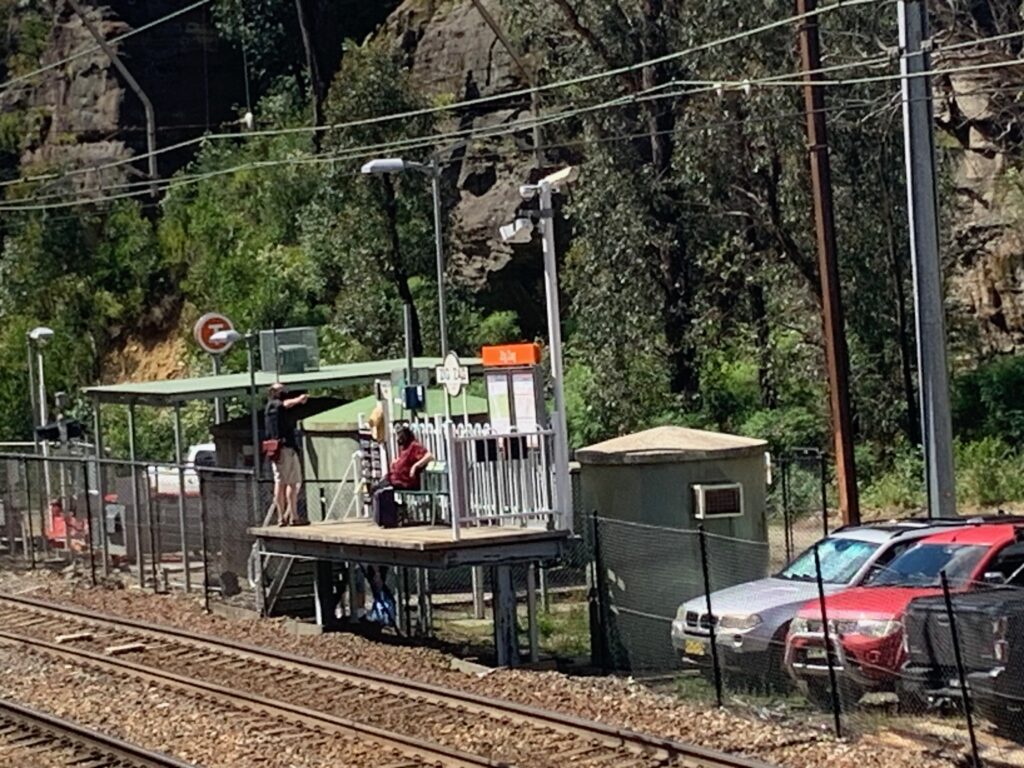
Passengers can also take the main line trans which run about every hour from Sydney through the Blue Mountains or from Lithgow to the tiny Zig Zag station. They then can then walk across to the Zig Zag railway Bottom Points station at the lower end of the Z. You can board the train there to ride the Zig Zag up to the top, then back to catch a train back to Sydney or wherever. There is a lavatory at Bottom Points station but no food or drinks service.

Top Points station is the middle station on the ride. It has no car or rail access apart from the Zig Zag Railway. In theory, you can hike here from Bottom Points station, a 2.3 km uphill walk. The train stops here for ten minutes, giving you enough time to use the lavatory, admire the view, rock climb the footbridge, and watch the engine shuffling around from front to back of the train.

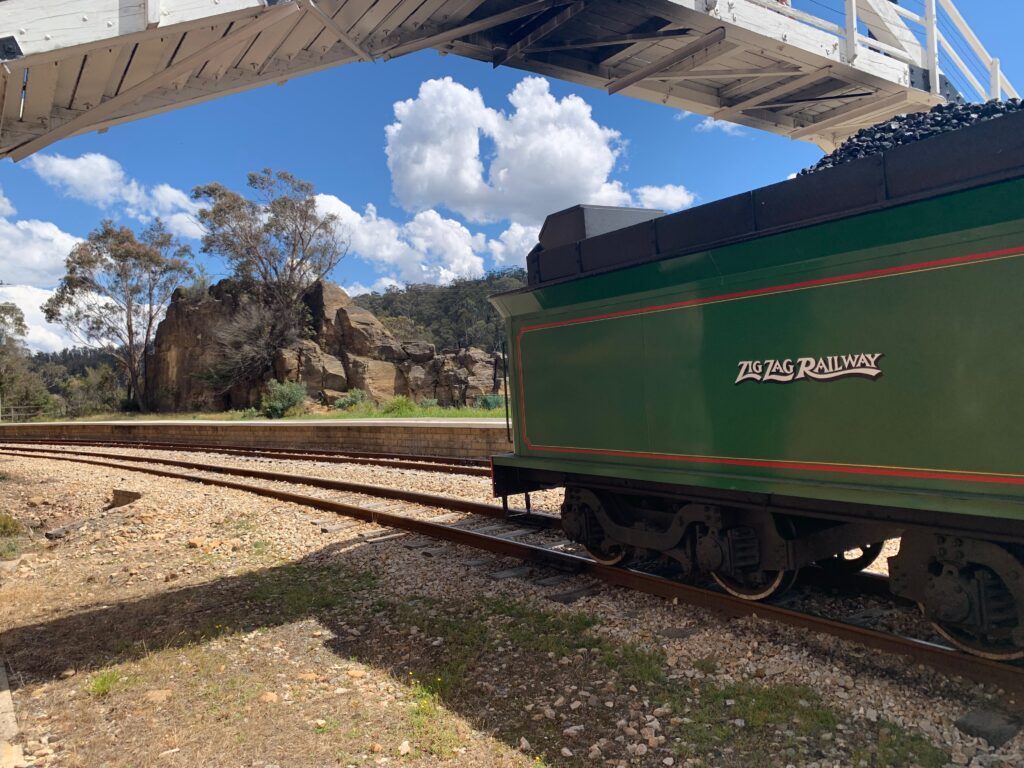

Booking
To purchase tickets for the Zig Zag Railway, head to the railway’s official website well in advance, as there are usually no tickets available on the day. You must book your ticket starting from the correct station (either Clarence or Bottom Points). This is because trains sell out and they usually cannot add people who have booked for the wrong start station.
The Zig Zag Railway also does not offer pre-booked individual seating, so arrive early. My hot tip is to be on the right-hand side of the train as it leaves Clarence and choose a carriage at the very front or back of the train; the views on the rugged are the clearest of the zigzag, and sitting at the back or front means you can see the engine in curves.
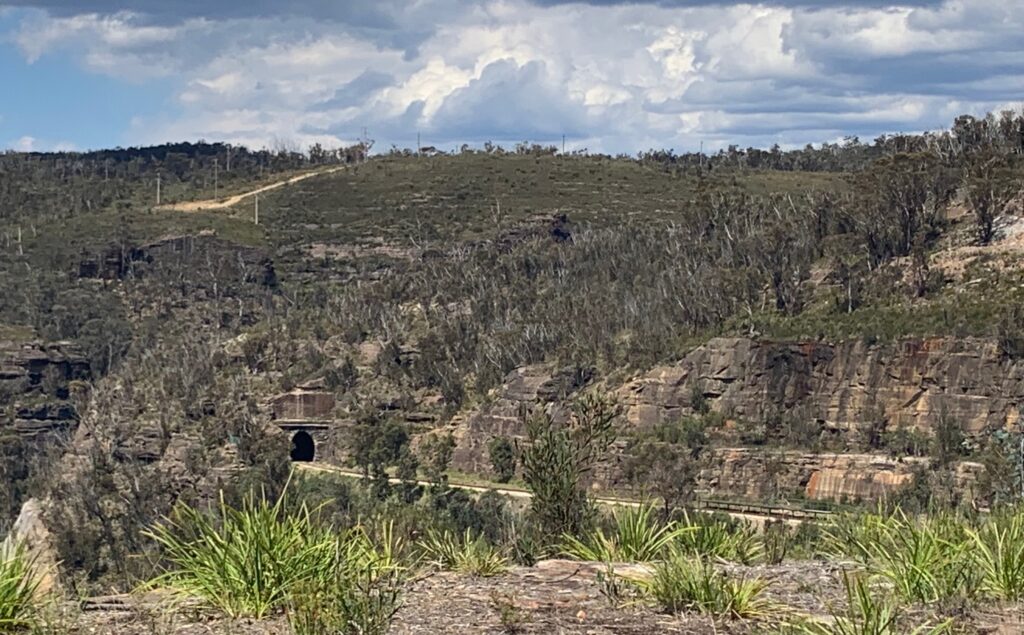
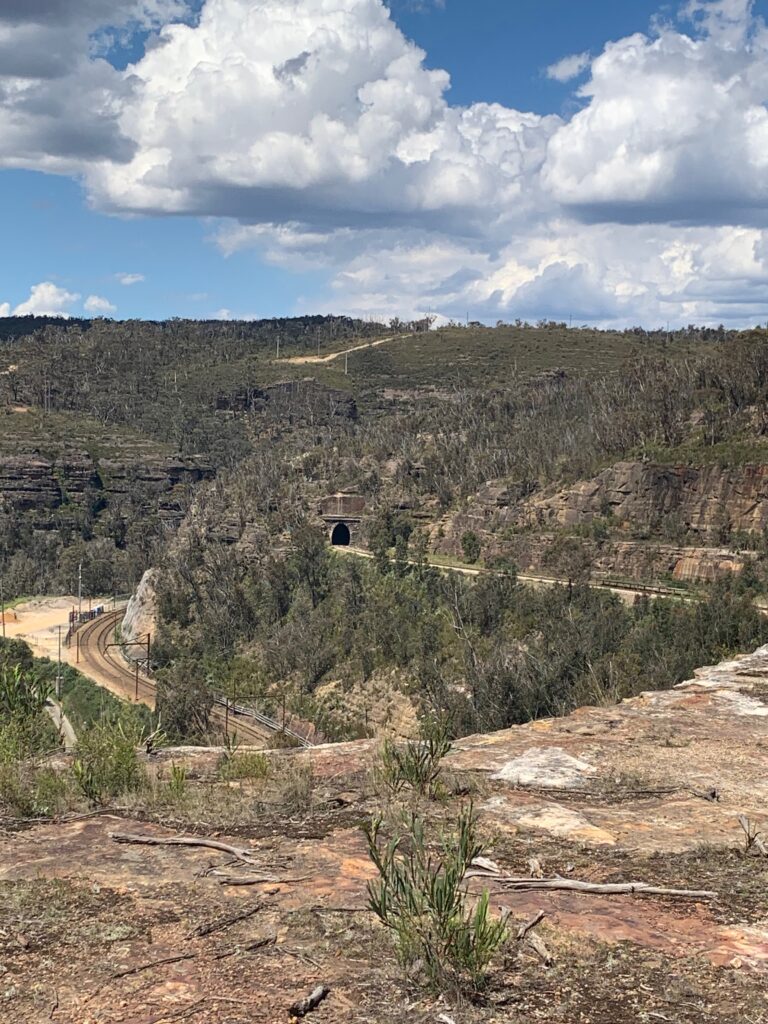
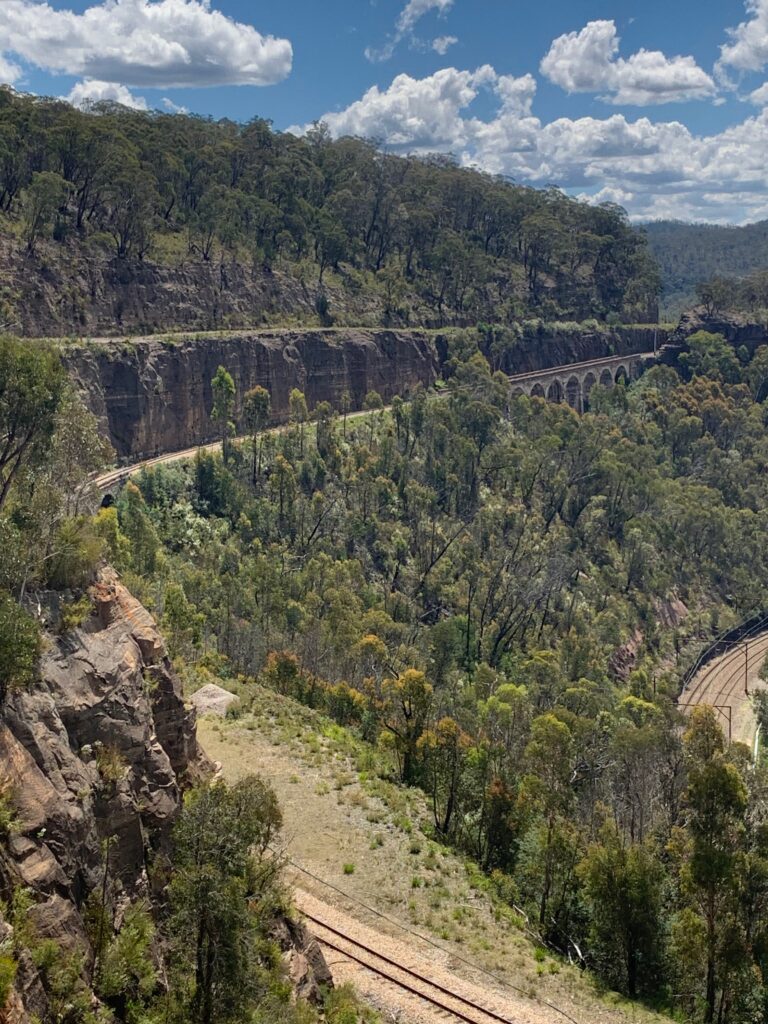
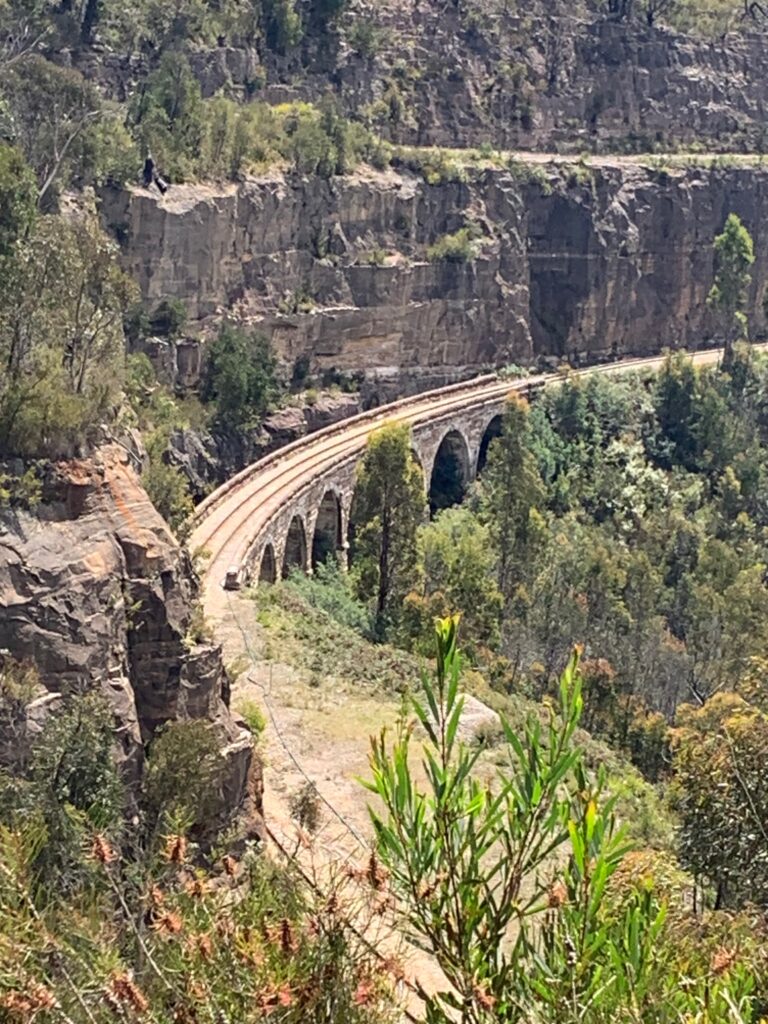
Journey Length
Today, a ride on the train takes between 90 and 120 minutes, depending on weather, shuttling, passenger loads. Allow two hours and give yourself half an hour to check in if you are coming by car. Also, allow extra travel time because the roads in the Blue Mountains can be notoriously slow on a weekend.
The Trains
The locomotives and rolling stock on the Zig Zag Railway have been mainly sourced from Queensland Railways, but there are also items from the South Australian Railways and Emu Bay Railway. The , meticulously restored carriages are comfortable to ride in and the rhythmic chug of the locomotive echoes the tales of a bygone era.
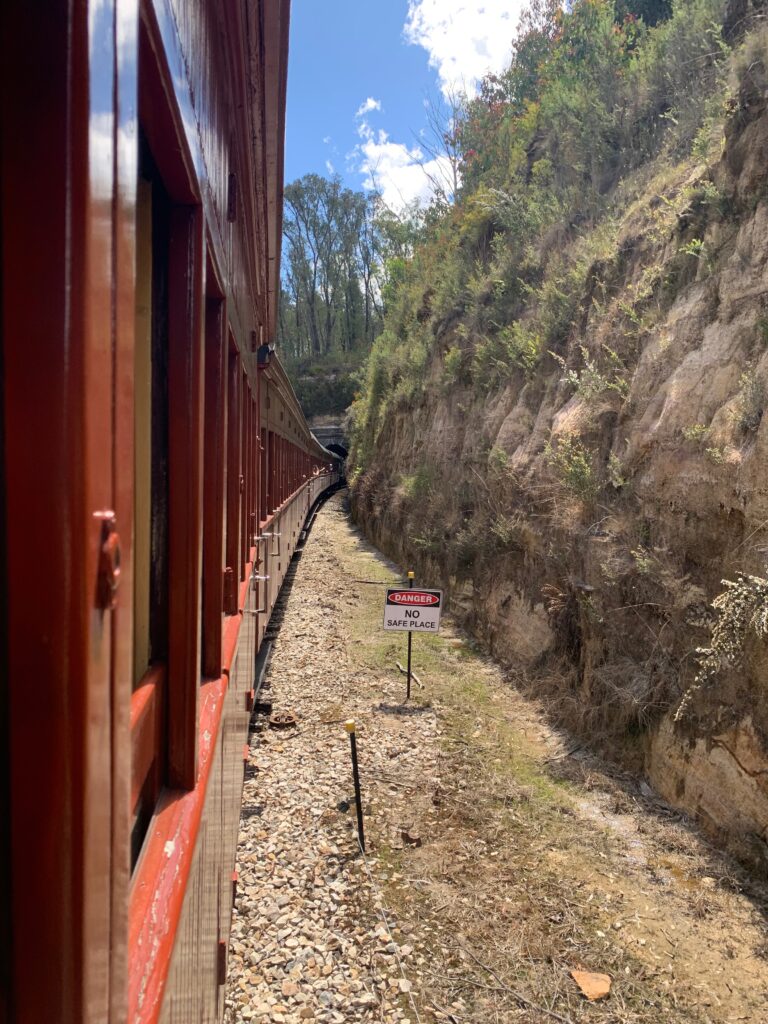
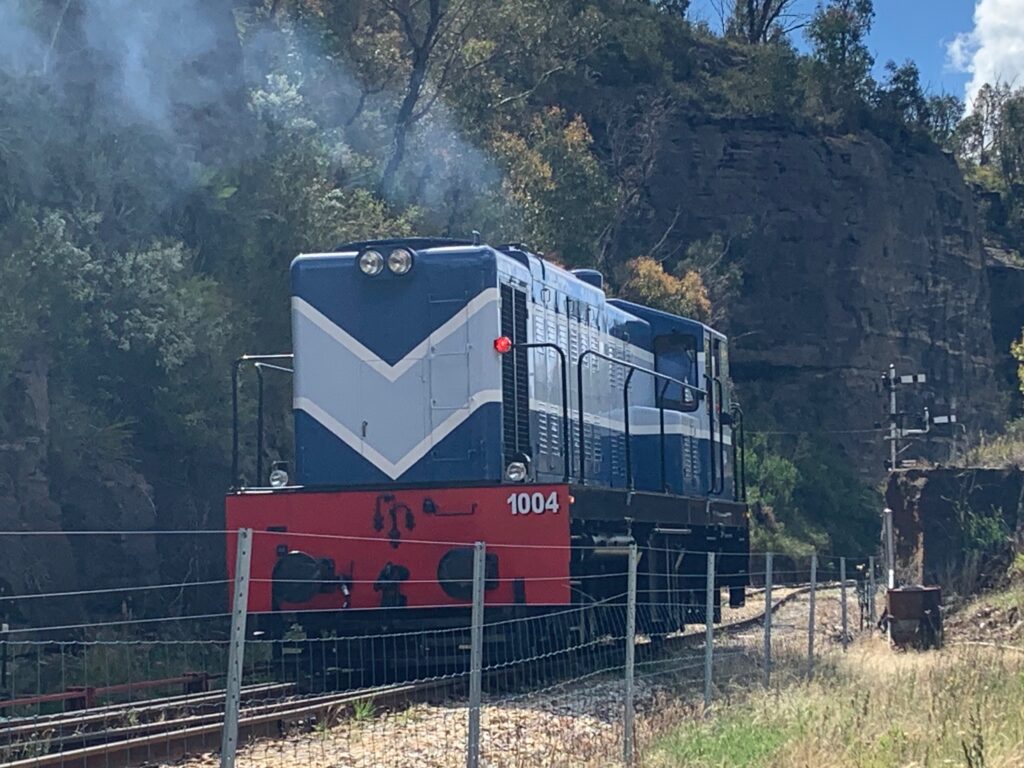

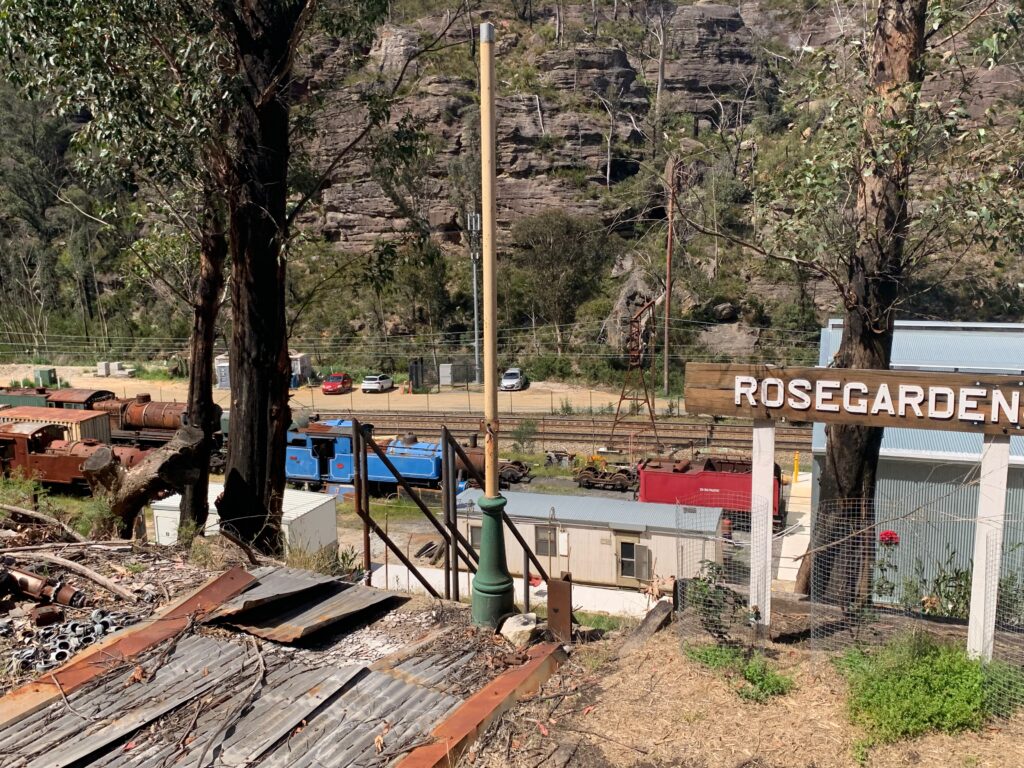
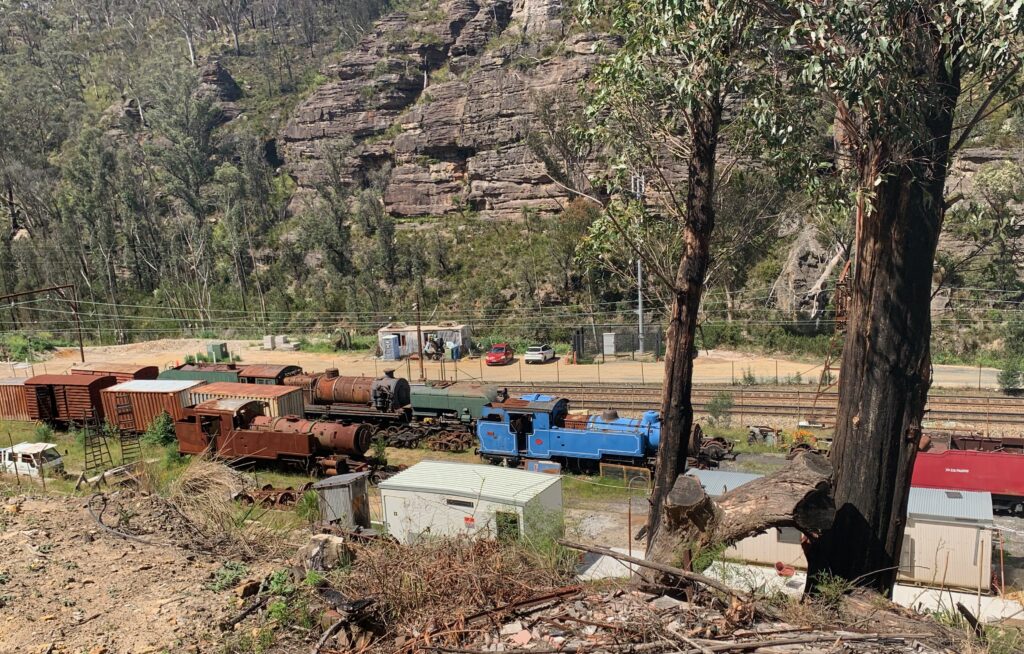
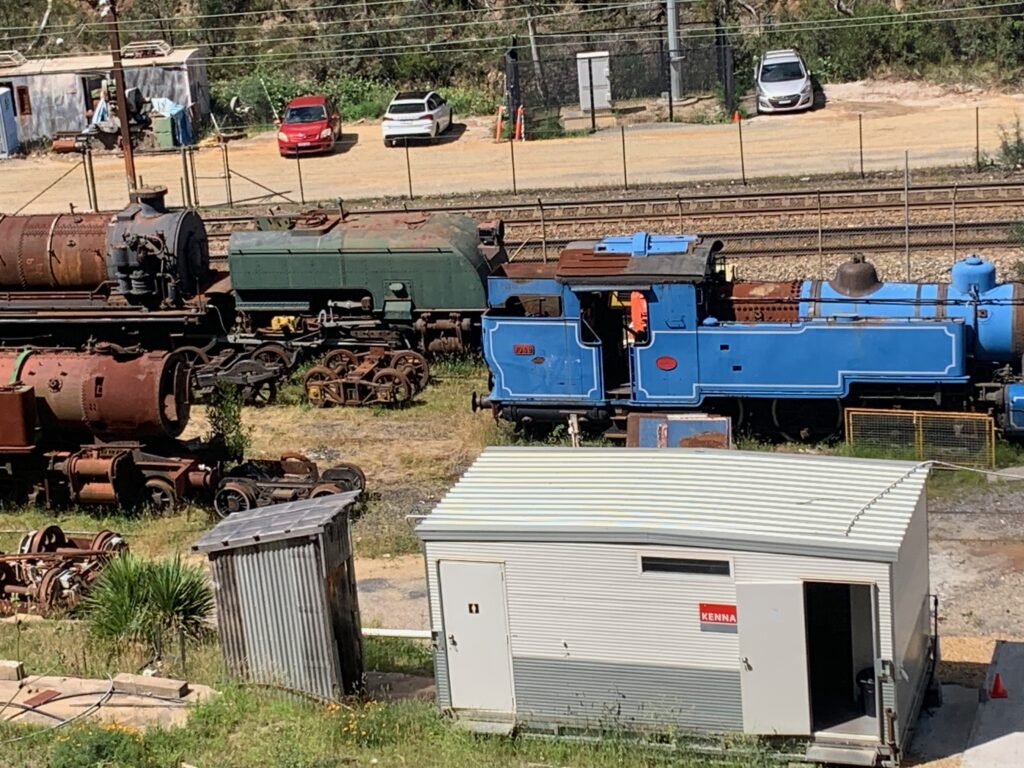
As the train winds its way through the mountains, we were treated to a spectacle of natural beauty. Lush eucalyptus forests, majestic rock formations, and panoramic views of the valleys below provide an immersive experience of Australia’s diverse landscapes. The line includes several short tunnels and three viaducts, which add to the excitement of the adventure.
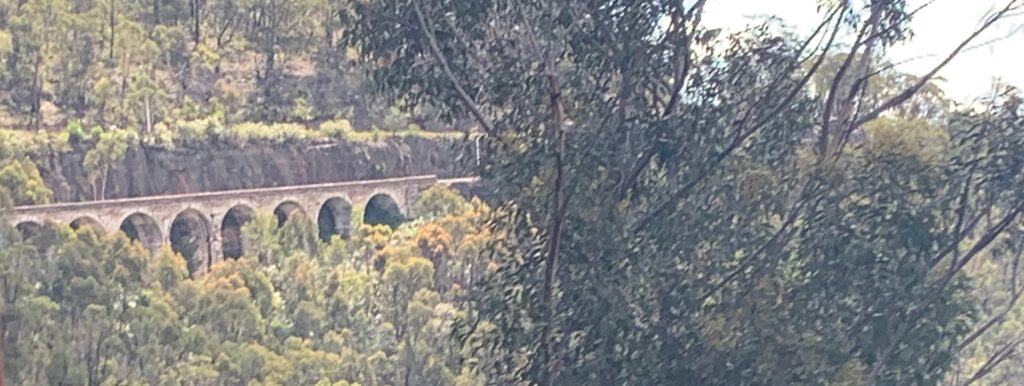
The Zig Zag Railway isn’t just a mode of transport; it’s a journey through the heart of nature. It offers a fascinating exploration of both nature and history, enhanced by the recent restoration efforts and an acknowledgment of the challenges posed by the local terrain and fires.
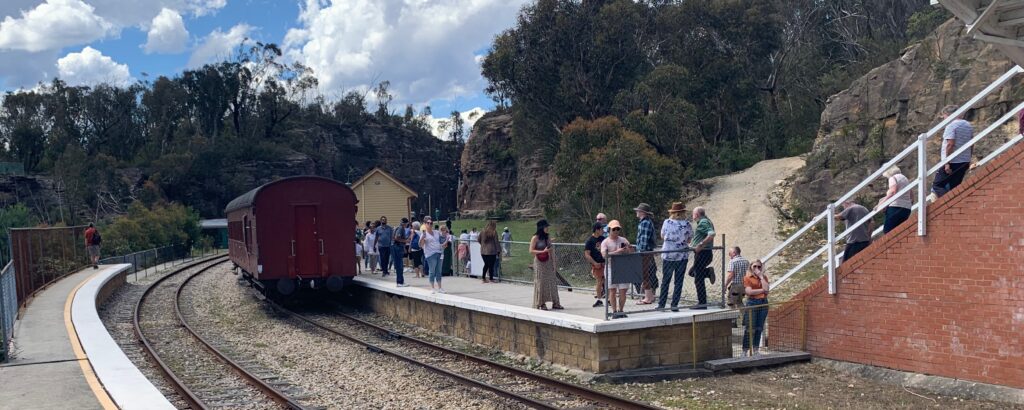


Leave a Reply